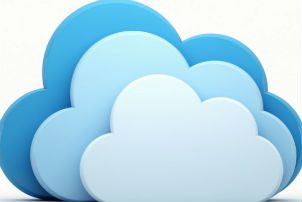 More and more companies are starting to use an all-inclusive learning method, developing employees at all levels, not just senior-level executives. Online and mobile learning enables organizations to reach and include the entire workforce, and it’s worth it. Executives may handle the strategy, but front-line employees have their fingers on the pulse of the customers.
More and more companies are starting to use an all-inclusive learning method, developing employees at all levels, not just senior-level executives. Online and mobile learning enables organizations to reach and include the entire workforce, and it’s worth it. Executives may handle the strategy, but front-line employees have their fingers on the pulse of the customers.
Properly training those front-line employees can uncover product and service recommendations, or better resolve customer inquiries and issues. Further, when companies can scale their workforce development efforts without a massive budgetary increase — enter cloud-based learning solutions — why not extend educational benefits previously reserved for senior executives to everyone?
Imagine the aggregate impact across an organization when learning can expand its reach and keep costs low. That’s one of the potential benefits of cloud-based LMSs. Yet, many organizations remain on outdated systems. Brandon Hall Group’s 2015 LMS Trends report showed that many are looking to make the change in coming years, but there are obstacles — real and imagined — that hold back companies from exploring alternatives and making the switch. For instance, many are leery of long-term contracts. In other cases, the default learning solution is part of a bigger solution purchase. Thus, while that solution may be subpar or hard to use, it’s even harder to get rid of.
Many of the outdated legacy solutions are feature-laden with bells and whistles that are never touched. Or they offer a clunky, counter-intuitive user experience that can actually stunt employee development efforts. Many of the modern cloud-based solutions, on the other hand, are so turnkey they require little time from internal technical resources, and the user experience has been fine tuned.
When evaluating a learning solution, always ask what functionality employees need to gain 80-90 percent of their learning needs vs. what’s “nice to have.” Today, the average employee generally learns the most valuable and relevant information from their peers rather than from dull employee-orientation materials or dated long-form videos. With most LMSs, the approach is to detach the employee from whatever they are doing to go train. This wastes valuable time and often offers very little feedback.
Modern learning isn’t about stepping away from or stopping your work to participate in a seminar, an instructor-led program, or an online class. Learning experiences are happening every moment all around us. Employees are looking up information online, talking to colleagues in the lunchroom, or participating in email exchanges with peers across the country or in some other part of the world. Learning is ubiquitous, and learning tools must mirror the way people work and learn to be effective. They cannot pull employees out of their regular workflow. Instead, learning leaders should specify what developmental needs are required, and then break them down into short learning blocks that can be integrated within the daily workflow.
Here are a few ways companies can improve learning efficiency while keeping employees engaged.
Streamline the content. Create learning in digestible, bite-sized content, rather than relying on one clunky repository of information, to target learning based on who employees work with, what projects they’re working on as well as project timing. Learning in blocks of two or three hours is not only outdated, it has been proven to be inefficient. Incorporating learning into the daily workflow while collaborating and networking helps employees to digest and internalize information more efficiently. This way there is no “break” for training, learning happens while employees are working to fulfill company goals.
Encourage companywide collaboration. Nobody can retain hours of information and then be expected to apply those skills right away. Employees want to learn with social and peer experiences in the context of their work. Unnecessary features and noise from top-down, pushed-out curriculums create a boring, tedious learning method that does not cultivate talent. Allowing different departments to work together while they share knowledge and learn, on the other hand, fosters a companywide culture of teamwork, increasing productivity and morale. Teaching and learning has drastically transformed in the past decade, and it is past time for companies to take notice and embrace change.
Learn literally in the palm of your hand. Workers increasingly work remotely and from their mobile devices, and these small screens align nicely with employees’ innate desire for short-form content. With the implementation of mobile platforms and short-form content, learning becomes a lot more flexible. Employees can learn on their own time, and they aren’t restricted to learning in the office. If they want to, employees can turn their morning commutes into valuable learning sessions. Further, with the increase of millennials joining the workplace, moving traditional business processes like learning and development onto a mobile platform aligns with where most of their interactivity takes place.
It’s time to start changing the way companies think about learning — and about tools like the LMS. They must look at workforce development as more of a collaborative process rather than an artifact of traditional development programs. Ask: How can an organization bring learning into its employees’ everyday workflow? How can management support and encourage constant learning and development? These answers should inform an organization’s learning strategy.
Rafael Solis is co-founder and COO of Braidio. To comment, email editor@CLOmedia.com.















